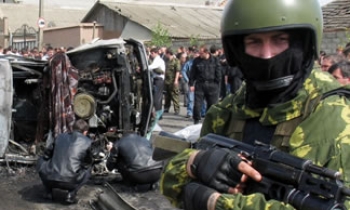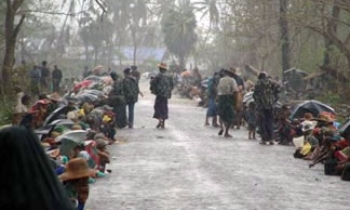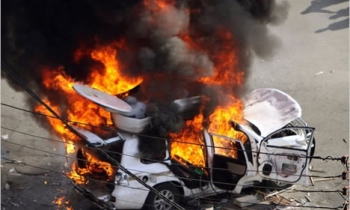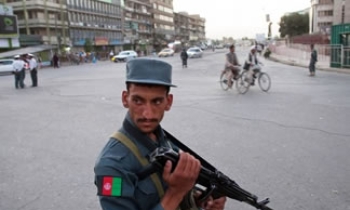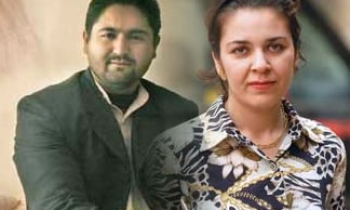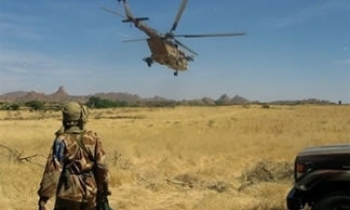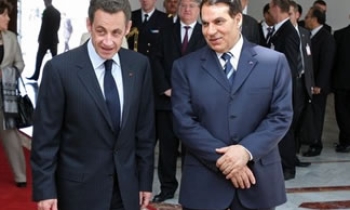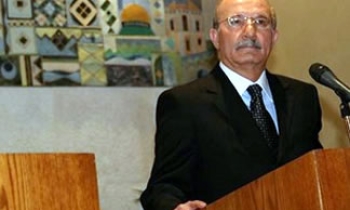BAGHDAD, April 14 -- An unarmed Iraqi journalist was among those killed during a controversial military raid late last month in northern Baghdad, according to interviews with his editors, a reporter who was with him when he died and other witnesses.
Kamal Manahi Anbar, 28, was enrolled in a training program of the London-based Institute for War and Peace Reporting, which runs courses for local news media in several countries. An editor who worked with Anbar at the institute wrote about the killing on its Web site this month.
On March 26, Anbar went to the al-Moustafa Husseiniya, a political and religious complex in the capital's Shaab neighborhood, to conduct interviews for a story about Shiite Muslims displaced from their homes by violence, said Aos Tammimi, a friend and reporter for U.S.-sponsored Radio Sawa who accompanied him.
Armored Humvees arrived, and a firefight broke out. Anbar hid for a while in an adjacent house, according to Sadoun Husseini, 56, who owns the house and watched the scene unfold. When Anbar later tried to flee, he was shot through the right cheekbone. Tammimi found his body.
"All that he was carrying was a notebook, which I still have, with his name and writing on it," said Tammimi, a friend of Anbar's for more than 10 years.
At least 16 people were reported killed in the raid by U.S. and Iraqi special forces. The U.S. military announced that 16 insurgents were killed. One hostage was rescued, and 18 detainees taken. Anbar is the first unarmed civilian to be identified among the victims. "This is the first I have heard that a journalist was there," said Lt. Col. Michelle Martin-Hing, a U.S. military spokeswoman in Baghdad.
The raid strained already fraying relations between the U.S. military and Iraq's Shiite-led government. In its aftermath, widely divergent accounts were put forward by the military and witnesses, whose accounts Iraqi officials cited in public denunciations of the operation. The complex included an office of the Dawa party, led by Prime Minister Ibrahim al-Jafari -- who called the assault a criminal act -- as well as a small prayer room. Iraq's Defense Ministry said it did not authorize the raid.
Video footage broadcast hours later on the al-Iraqiya television network, which is closely tied to Jafari, showed bodies strewn among prayer books and no weapons in sight. The building was a mosque, several witnesses said, and people were killed while praying. Witnesses interviewed at the complex later said many unarmed worshipers had been shot while praying, which the U.S. military and the Iraqi commander at the scene have denied.
Neighborhood residents said al-Moustafa Husseiniya was a gathering place for supporters of the Shiite cleric Moqtada al-Sadr and his Mahdi Army militia, which the United States has blamed for a slew of killings in Baghdad in recent weeks. Sadr has backed Jafari's contested bid to retain the prime minister's post, while U.S. officials have suggested Jafari should step aside to help break a months-long deadlock.
In a statement released the night of the raid, the U.S. military said that the site was a known refuge for kidnappers and killers and that during a firefight there, "Iraqi Special Operations Forces killed 16 insurgents." U.S. commanders, including two of the top generals in Baghdad, later said the al-Iraqiya video had been staged, with bodies moved from where people had died, weapons removed from the scene and prayer books added.
U.S. and Iraqi officials are conducting an investigation into the operation. As part of that effort, a group of investigators visited al-Moustafa Husseiniya on Wednesday for the first time, Martin-Hing said.
According to an account of the raid prepared by the military for investigators, U.S. and Iraqi troops had tracked the leader of a criminal cell operating out of the building since December. The account noted that armed guards positioned on the roof would crouch out of sight when military vehicles passed.
On March 13, three members of the Iraqi army's counterterrorism force, the unit that conducted the raid, were abducted, the military said. Their bodies were found at the Baghdad morgue with fingers severed, bearing stab wounds and whip marks and appearing as if they had been dragged behind a vehicle.
By March 20, the military had concluded that the men were tortured in the Husseiniya, a type of Shiite prayer hall that differs slightly from a mosque. Just after 6 p.m. on March 26, about 25 U.S. and 50 Iraqi soldiers arrived in armored Humvees and a truck. They established a cordon around the compound, which occupies most of a trapezoidal block, and began taking fire from the targeted building and nearby houses before the vehicles had come to a stop.
Although they played a primarily advisory role, U.S. forces helped return fire and probably killed one or two of the fighters, according to Lt. Col. Sean Swindell, commander of the Special Forces battalion at the scene. The Iraqi soldiers killed the others, most of them inside the compound, where the floor was still stained with pools of blood the day after the raid.
U.S. and Iraqi commanders later said they believed that the building was an office, not a religious center, but acknowledged that when they entered it, they found a small minaret.
"The point is, when you start taking fire from one of these places, it loses any protected status it might have had," said a military spokesman, who spoke on condition of anonymity because the investigation is in progress.
Photographs taken by U.S. military combat photographers at the scene appeared to confirm that many of those killed were armed. Several dead men were shown with rifles slung over their shoulders or lying next to them.
"You've got body, weapon, body, weapon, and not a rug or a prayer book in sight," the military spokesman said. "It's pretty clear why they were targeted."
Other photographs taken at the site showed a pile of what appeared to be Iraqi army uniforms and what the military said were wiring and detonators for roadside bombs.
Weeks before the raid, Anbar had traveled to Sulaymaniyah in northeastern Iraq to take journalism classes with the Institute for War and Peace Reporting, according to Tiare Rath, an American journalist who works there as a trainer.
"This is how I will always remember Kamal: pen in one hand, notebook in the other, furiously scribbling every piece of information that came his way," Rath wrote in an article posted on the Web site of the institute, which has trained about 1,000 Iraqi journalists. Anbar was the first of those to be killed. The vast majority of the journalists killed in Iraq since 2003 have been Iraqi.
Anbar and Tammimi had arrived moments before the shooting began and were standing in the mosque's courtyard when the Humvees arrived, said Tammimi, by telephone from Syria, where he said he had gone to try to move beyond his friend's death.
With several worshipers from the mosque, Anbar jumped a gate and entered Husseini's house next door, where Husseini's wife and children were hiding from the firefight.
The men wrote their names and phone numbers on a piece of paper and asked Husseini's wife to call their families if anything happened to them, Husseini said. When the shooting seemed to slow, Anbar left the house and was dashing across the street to leave the neighborhood when the bullet cut him down. It was unclear whether he was shot deliberately or killed in the crossfire.
Members of Anbar's family, who did not know he was training to become a journalist, said they came to retrieve his body and bring it home before transporting it to the Shiite holy city of Najaf to be buried. He left a wife who is three months pregnant.
"The whole family is grieving," Kadhim Abu Murtada, Anbar's brother-in-law, said in a telephone interview. "We are still mourning his death."
Special correspondents K.I. Ibrahim and Saad al-Izzi contributed to this report.

